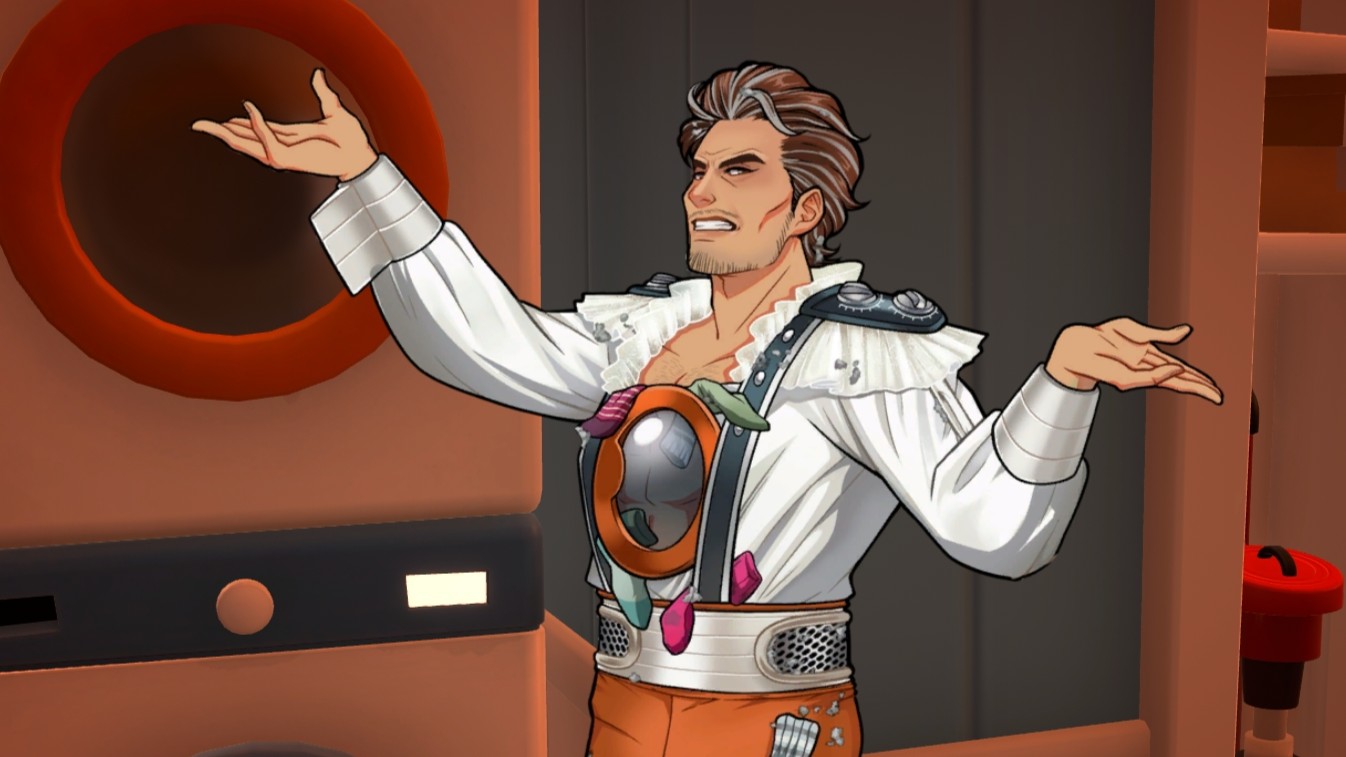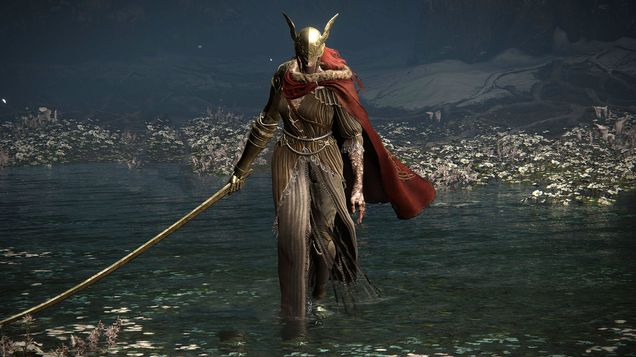
I believe it was Socrates who said, “I love it when a plan comes together!” Jagged Alliance 3’s deep but approachable tactical combat delivers that satisfaction on just about every mission. Managing a team of memorable mercs to set up turn-based takedowns feels even better with in-depth squad customization and many viable playstyles. Its sense of humor rarely managed to make me chuckle, but that hardly mattered when I was orchestrating a beautiful symphony of destruction… or watching it all come crashing down because everyone missed an easy shot on the same turn. That makes me chuckle.
The basic plot is easy to understand but not without some moral complexity: The president of the fictional West African nation of Grand Chien has been kidnapped by a mysterious bad guy calling himself The Major, and your team of international mercenaries has been hired to rescue him. Set in early 2001, Jagged Alliance 3 loves to play up the cliches of pre-9/11 action movies while presenting a conflict that feels like it could be ripped from the headlines. Those two flavors don’t always taste great together, and the middle school dudebro humor hardly ever really lands for me. But for the most part it’s not mean-spirited, so I can usually just ignore it.
And that got easy once I became engrossed in the turn-based tactical combat, which is among the best I’ve seen in years. Your custom squad of up to six mercs can specialize in everything from heavy weapons to sniper rifles to demolitions, and I never felt forced to bring a role I don’t enjoy simply to fill a niche. Because I’m kind of boring and predictable, I basically made a team of five marksmen and one medic (who was also a pretty good marksman), and approached each mission by trying to stay unseen and snipe all the enemies one by one. I wasn’t punished for lacking a token shotgun guy or melee expert, outside of a few times when I had to break into a compound with very short firing lines. There’s a great balance here between maintaining a consistent difficulty and allowing a lot of freedom in your playstyle.
I never felt forced to bring a role I don’t enjoy simply to fill a niche.
One area where Jagged Alliance has always differed from its cousins like XCOM is that most of the available mercs are pre-written characters instead of blank slates, and come with a distinct personality and visual style. Some even have unique combat traits. While I might not have always found the archetypes they were based on especially entertaining, I did like that they weren’t just an endless procession of mostly indistinguishable grunts. My Canadian medic, Michael “M.D.” Dawson’s whole schtick is that he’s very timid and self-conscious. He’s not even supposed to be here today! But his character trait causes him to make the whole squad feel inspired when he makes a tough shot and is surprised by his own competence. Livewire, my hacker, is written as an almost exasperating stereotype of a snarky college student, but her practicality occasionally opened up some new options for me in quest dialogue when I had her on my team.
Allied Forces
Jagged Alliance 3 features a drop-in/drop-out co-op mode for two players that allows you each to hire and control your own squad of mercs from a common pool of funds. You don’t have strategic independence to go pursue objectives in different sectors simultaneously, though, so you’ll have to stick together.
One thing that did bug me a bit is the way suppression works. It’s hard to have a dedicated machine gunner because you can’t just buy ammo with cash outside of a few places that have a very limited supply, and automatic weapons chew through that precious supply hungrily. Single-shot and even burst-fire weapons don’t usually suppress enemies at all, even if you have multiple mercs firing on the same target. This meant that it felt unnecessarily difficult to use conventional move-and-fire tactics with my rifle team, which led to some really awkward tactical situations. The only way to effectively cover someone trying to move up, a lot of the time, is to outright kill everyone shooting at them. And that’s not really how a modern firefight works.
An area where Jagged Alliance 3 stands out from a lot of tactics games is its truly impressive world map. It has well over 100 accessible tiles, each of which comes with its own custom 3D battle map. You’ll find everything from dense urban areas to open savannah infested by hostile wildlife, and even the ones with no enemies or campaign objectives are worth visiting to collect resources like medicinal herbs and even sometimes come across hidden supply caches. Each map is attractive and readable, with great use of color and lighting.
Playing on the permadeath setting, which I would definitely recommend, can be nail-bitingly stressful.
The way cover is spaced out in some of the sparse ones is a bit annoying given how limited my access to effective suppressing fire could be, forcing me into open ground to get any closer to a fortified target. But the way that builds tension can be a good thing, even if it sometimes makes me feel like I’m being careless with my team’s lives. And playing on the permadeath setting, which I would definitely recommend, that can be nail-bitingly stressful.
There’s plenty to do as you fight across the Grand Chien map as well, from securing critical diamond mines that let you keep paying your mercs and prevent them from deserting, to training local militias so you don’t have to be everywhere at once when periodic enemy raids target your settlements, or simply enjoying some R&R to keep everyone in good spirits and thus maximum combat effectiveness. Almost every town has an interesting side quest or two, rewarding you with increased loyalty and income. My favorite involved getting a street gang of homicidal old ladies back together, which at one point required me to hire someone with the Psychopath trait in order to relate to their most reluctant former member.
It’s also important to have at least one explosives expert and one tech nerd along in case you need to disarm a booby-trapped container or steal some classified data from a Windows ME laptop. That helped the feeling that everyone on the team had a specific job, even if I built them all pretty similarly combat-wise.
Almost every town has an interesting side quest or two.
The entire campaign took me more than 40 hours as I meticulously combed almost all of the map and did nearly all of the side quests offered to me, but it never really overstayed its welcome. I will say that on default difficulty the economics side eventually became a bit too easy to manage: I could have technically hired multiple squads of mercs once I was stacking cash to the ceiling, but I got attached to my Alpha Team and never felt like I wasn’t able to accomplish all of the main objectives with them while keeping a decent defensive line using local militia recruits. It made me wish there were more ways to spend my money, since even buying new gear is usually a one-time transaction that is only available in select places. You can’t just order up crates of bullets or six full sets of advanced body armor.
There are plenty of other options for merc progression, though. For instance, dismantling items gives you components that can be used to craft useful weapon mods. These might give you bonuses to aimed shots or a higher critical chance. Armor can be decked out with ceramic plates that negate the first few hits taken to a specific body part. That can be clutch, since headshots deal a lot more damage and getting hit in the hand or the leg can impair your aiming and movement, respectively. Leveling up gives you a choice of perks based on your stats, though I found that there weren’t enough of these that are really useful to my playstyle, so I ended up taking the same ones on most of my squad, regardless of specialization.
Even when I had a team of hardened doom snipers and was clearing enemy encampments with brutal efficiency, the pacing evened out to be satisfying. And there were enough maps that threw some kind of wrench into my plans, like an enormous pit mine or a heavily fortified prison, that no two firefights felt exactly the same. There’s plenty of room for future playthroughs with options like the Iron Man-style “Dead is Dead” mode that auto-saves every time someone dies, and “To the Bitter End” that disallows saving in combat altogether. I didn’t end up hiring even a quarter of the available mercs, either, so there are plenty more characters to meet. And if they all have the same amount of dialogue as the ones I did hire, simply running a different team would feel like a fairly fresh experience.




